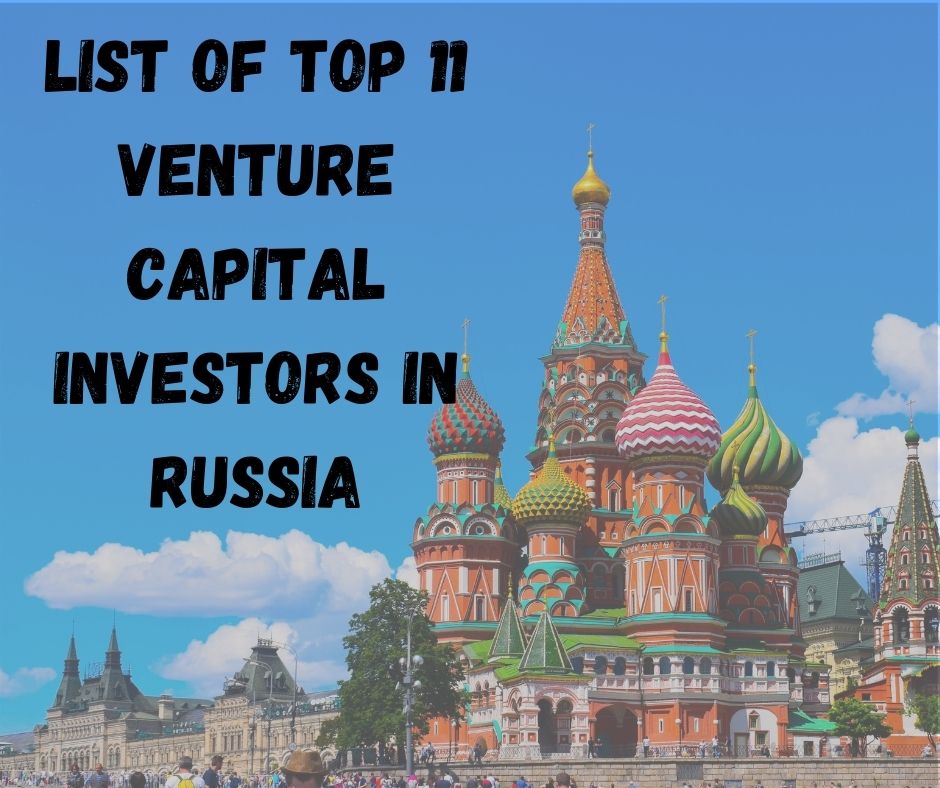List of Top 11 Venture Capital Investors in Russia
- 3 October 2020 | 2963 Views | By Abhinav Mishra

There are a lot of startups with great ideas across the world which if scaled have the potential to completely change their specific industry. How can a startup grow? The only way to grow is to increase sales and it can only happen when you reach more people and that is possible with a lot of investment. Where the capital for growth comes? Since we are talking about a huge amount of capital, the capital mostly comes from people with very deep pockets. There are investors who like to invest in businesses that have a long term growth perspective. This capital is known as venture capital and the investors which invest are called venture capitalists.
What is a Venture Capital Company?
A venture capital company is one that provides funding for a new or growing business. Such companies specialize in building high-risk financial portfolios. The company can be a government, semi-government, or a private company. These firms usually invest in ventures which are capable of providing returns higher than market interest rates.
How Do Venture Capital Firms make Money?
The venture capital firm invests in the early stage of the startup when the success is not at all assured. It is important to know that not all investment made by VC firm delivers returns since they are a high-risk investment.
In return for its investment, the firm receives ownership in the company. Since the startup is in its early days, the investment made by the firm will be equivalent to the firm’s ownership. With time the company grows and hence the capital of the firm also grows. For example, the VC firm invested $1 million in a startup (valued at $1 million) for a 40 percent stake in the company. Over the period of the next 10 years company did extremely well and now is valued at $100 million.
Since the firm had a 40 percent stake, it has $40 million capital. The evaluation does not correspond to actual cash, so how does the firm make money? There are two ways to do that – It can either sell 40% of its stake to a larger company or sell shares through IPO (Initial Public Offering). In both cases, the firm is able to liquidate. Read about Venture Capital v/s Crowd Funding.
Does Venture Capital have to be paid back?
In the above example, the VC firm made money because the startup was able to grow over time. But not all businesses in which a firm invests grow. Some of them will fail, so in those cases what about the capital that was invested by the firm? The venture capital firm invests in a company and in return they become the partner in the company thereby riding with the company as it grows or fails. If the company fails there investment is gone.
If the company grows, then yes, the VC firms get the capital back (with high returns) but if the company fails the capital is gone and no one is liable to pay for the capital the firm invested.
What is the Average Return on Venture Capital?
Based on detailed research from Cambridge Associates, the top quartile of VC firms have an average annual return ranging from 15% to 27% over the past 10 years. If you take into account all VC firms, about 15 percent of companies that are acquired or go public achieve returns greater than 1,000 percent. The 35 percent of the companies achieve returns below 35 percent and 15 percent of the companies deliver negative returns. The most probable return is only about 20 percent.
What is a Tier 1 VC?
There are a lot of VCs out there but you can put them in 3 categories: Tier 1, Tier 2, and Tier 3.
Tier 1
The top 15-20 firms which invest large funds of $300-$500 million in startups and have some unicorns in their portfolio fall in this category.
Tier 2
The next 20-25 firms are in this category and they lack unicorns in their portfolio or may have very few.
Tier 3
All others except those in the above two categories are Tier 3 VC.
Ever wondered How does a Venture Capital Fund work?
Who are the top Venture Capital Firms in Russia?
Russian is popular for its tech companies and in the last decade a lot of tech companies have come up with their IPO. In the last 4 to 5 years a lot of startups have shown potential from different industries. At the same time, there are a lot of VC firms with a lot of capital to invest. If you are in Russia and looking for a VC firm, here are the VC firms should check –
1. Almaz Capital
It is one of the biggest venture capital firms with a focus on technology companies serving global markets. They have invested in over 30 startups since it was started in 2008. They also have an investment in Yandex, the biggest tech company in Russia. The other areas where they invest are Internet Infrastructure & Services, Electronic Commerce, and Mobile & Consumer Applications.
2. Addventure
It is an international capital fund with a base in Russia. They mainly invest in FoodTech and HealthTech companies and in the last 10 years, they have invested in 23 companies. They invest in the range of $1-$40 million.
3. Genezis Technology Capital
The firm invests in Russia and also in parts of Europe and Asia. The investment starts from $300K and goes up to $2 million. Apart from capital, the firm also provides top-level support from renowned mentors from all parts of the world. They invest in technology companies working around Robotics and artificial intelligence, online services, mobile software applications, Cloud solutions, and eLearning.
4. Runa Capital
It invests in early-stage software startups. They have invested in over 80 companies in 13 different countries with a focus mainly on Russia. Their focus is on B2B SaaS, Deep Tech, Fintech, Edutech, and Digital Health.
5. ABRT
The ABRT Venture firm makes early-stage and growth-stage investments in companies that have developed innovative technology services or products and that display a significant competitive advantage. It creates a structure of funds, operating, and management companies.
6. Russia Partners
It is one of the oldest and biggest venture capital firms in Russia. They provide long-term investment capital to Russian companies for their expansion with the goal of increasing their capitalization and market value. Their target industries are advertising & publishing, construction materials, media & media services, consumer services, financial services and leasing, consumer & household products, IT services, logistics, pharmaceuticals, real estate, retail, and telecommunications.
7. IMI.vc
This is a sector-specific VC firm which only focuses on startups on online and mobile. They have invested in more than 40 businesses worldwide.
8. Fastlane Ventures
They invest in companies around the internet market. Other than providing investment to startups they also provide management and organizational support to them. They have invested in 10 internet businesses as of now.
9. Softline Venture partners
The firm invests in Russia and the CIS market and since its inception in 2008, it has invested over $25 million in 20 different portfolios. They invest in companies working around Cybersecurity, Cloud computing, Internet of Things, Big Data, Artificial Intelligence, and Edge Computing. They invest in the seed stage and also in the growth phase of the company.
10. Baring Vostok
The firm was started in 1994 and so far has invested $2.8 billion in 80 projects. The majority of their investment is in sectors like the Internet, Media, Telecoms, Natural Resources, Financial Services, and Consumer goods and services.
11. InVenture Partners
It is one of the leading investment firms that helps entrepreneurs start and then grow disruptive technology businesses. They make an investment of $2-10 million, but are generally flexible on the investment size and can back attractive business models both at the earliest stages of their development as well as at the late stages.
What’s the difference between PE and VC?
Private Equity (PE) is similar to Venture Capital (VC) in the sense that both make an investment into startups with the aim to get good returns. However, it differs from VC in the below aspects:
How they invest – While VC mainly invests through equity, a PE mostly uses a mix of debt and equity to take control of the company.
Investment Size – VC invests in a small amount usually between $1 and $10 million while PEs invests hundreds of millions or billions in some cases.
Percent of Investment – VC acquires a small stake in a company while PE takes a majority stake in the company.
Investment Stage – VC firm can invest in any stage in the development while PEs usually invest in performing companies with the aim to make it more worthwhile in the coming years.
Read more about Venture Capital and Investments in Fintech:List of Top Venture Capital Investments in Fintech Startups









